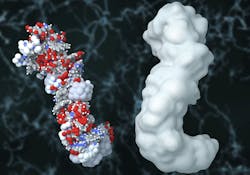WASHINGTON — Jan. 25, 2016 — Scientists found that proteins similar to those implicated in Alzheimer’s disease could help purify polluted water, according to Science News.
A new membrane uses thin amyloid protein fibers to pull heavy metals and radioactive wastes out of water. The membranes can capture more than their own weight in some contaminants, said scientists in the Jan. 25 report in Nature Nanotechnology.
"I think what’s really interesting in this study is that it actually used a protein material, which is novel," said Qilin Li, an environmental engineer at Rice University in Houston who was not involved in the study. Specifically, the team converted milk proteins into fibers of durable amyloid protein. Other amyloids are infamous for building up in the brains of Alzheimer’s patients, but the team put their amyloids’ sticky tendrils to different use.
When paired with strong, porous carbon in a membrane, the lab-made amyloids successfully filtered over 99 percent of toxic materials out of solutions that mimicked severely polluted waters, the scientists report. The amyloids trapped particles of lead and mercury at a molecular site that is involved in turning the original milk protein into its pasty form. Radioactive waste particles also got tangled in the membranes. And the membranes snagged gold contaminants, which the team found could later be recovered and purified. A membrane with less than 6 milligrams of amyloids could trap 100 milligrams of gold, the scientists report.
It’s exciting to see that the amyloids can hold more than their own mass in heavy metal particles, said Li. More typical membrane materials, she says, would grab only a fraction of their weight in pollutants.
The membranes could be developed for small- or large-scale water purification units, said study co-author Raffaele Mezzenga, a physicist at ETH Zurich. Mezzenga estimated the technology would cost roughly one dollar per every thousand liters of water filtered. And a membrane can recover hundreds of times its own value in precious metals, Mezzenga says. The membrane design is simple and flexible, and could be adjusted to optimize cleanup or metal recovery, he says.
Li said the membranes will need to be tested and optimized in real polluted waters, which may have chemical complications such as high or low acidities. But the amyloids’ performance is encouraging, she said, and the proteins’ contaminant-trapping capabilities could inspire other researchers developing contaminant filters.
You can find the entire article here.


